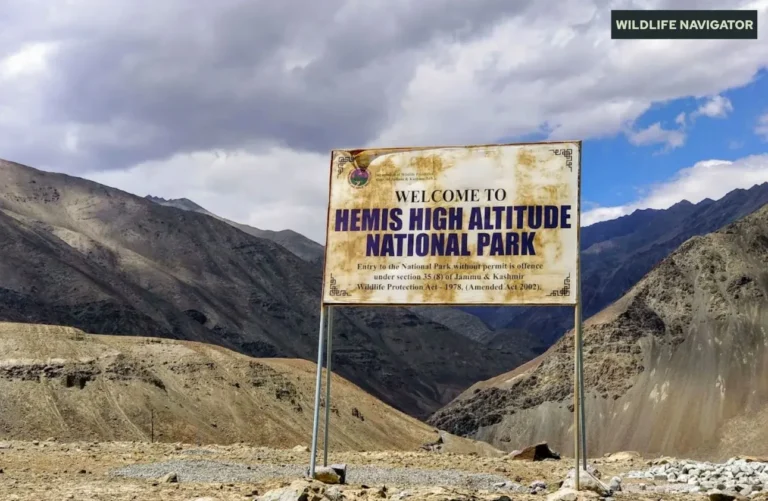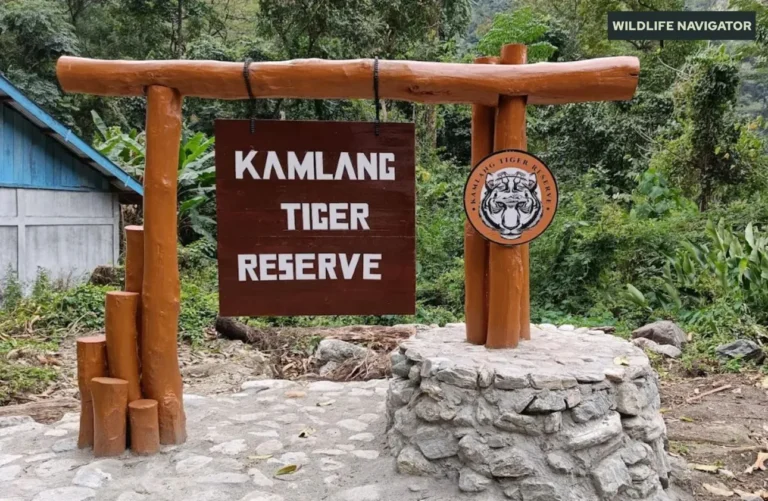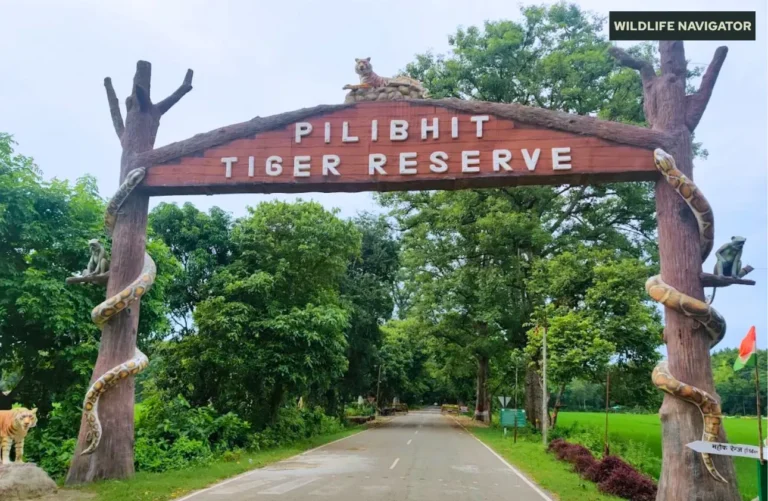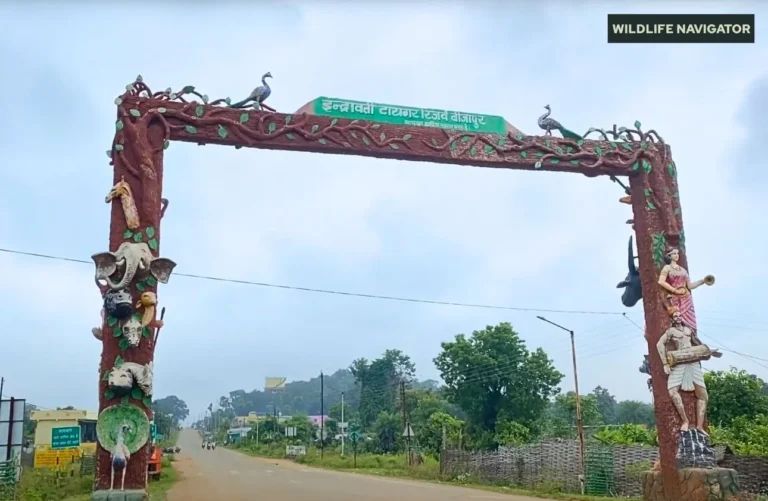Biligiri Rangaswamy Temple Tiger Reserve | BRT Tiger Reserve
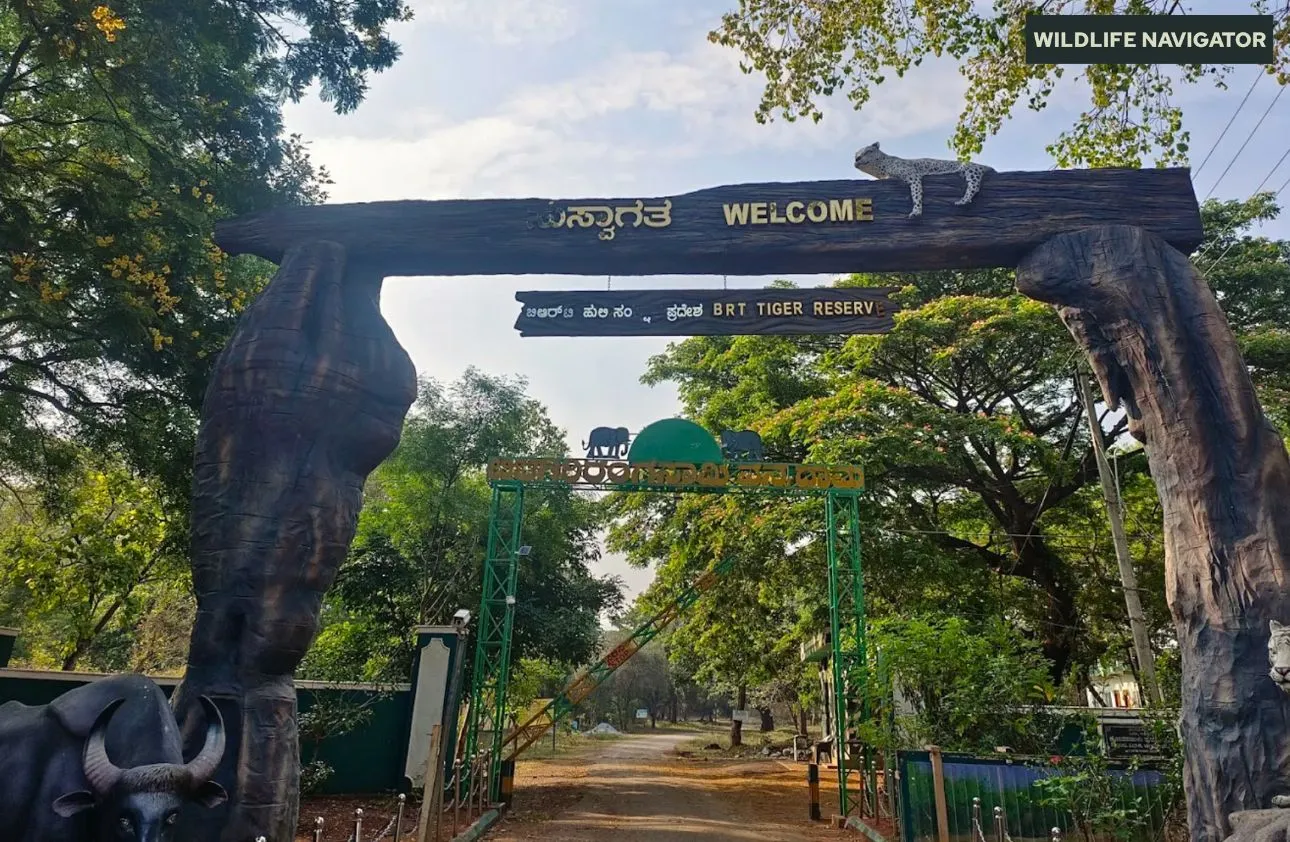
Biligiri Rangaswamy Temple Tiger Reserve, often called BRT Tiger Reserve, lies where the mighty Eastern and Western Ghats meet in southern Karnataka. This natural junction creates one of the most biologically diverse regions in India. The reserve draws attention not only for its wildlife but also for its deep spiritual connection to the ancient Biligiri Ranganathaswamy Temple perched atop the hills.
Declared a Tiger Reserve in 2011, it serves as a vital wildlife corridor supporting a healthy population of Bengal tigers, elephants, leopards, and several rare species of flora and fauna. The unique blend of sacred traditions, rich tribal culture, and untouched wilderness makes it a destination unlike any other in the country.
Here, the hills echo with the chants from the temple, while deep forests thrive with the roars of tigers — a perfect harmony between nature and heritage that defines the soul of Biligiri Rangaswamy Temple Tiger Reserve.
History and Significance
The story of Biligiri Rangaswamy Temple Tiger Reserve is one of both conservation and cultural legacy. Originally declared as Biligiri Ranganathaswamy Temple Wildlife Sanctuary in 1974, it was upgraded to a tiger reserve in India in 2011 under Project Tiger, becoming part of the country’s network of protected habitats. This designation marked a crucial milestone in Karnataka’s efforts to safeguard its fast-declining big cat population.
What makes BRT truly distinctive is the deep connection between its natural and human elements. The reserve is home to the Soliga tribal community, one of the oldest forest-dwelling tribes in southern India. For generations, the Soligas have lived in harmony with the forest, practising sustainable collection of honey, fruits, and medicinal plants. Their coexistence with wildlife reflects a model of conservation rooted in respect and balance.
At the heart of the reserve stands the sacred Biligiri Ranganathaswamy Temple, dedicated to Lord Ranganatha (a form of Lord Vishnu). Every year, devotees trek up the Biligiri Hills to offer prayers, adding a spiritual rhythm to this wild landscape. The fusion of ecology and faith gives BRT Tiger Reserve a unique identity — a place where culture, conservation, and community meet seamlessly.
Geography and Landscape
Biligiri Rangaswamy Temple Tiger Reserve spreads across the majestic Biligiri Rangan Hills, forming a vital ecological bridge between the Western and Eastern Ghats. This natural corridor allows free movement of wildlife species and supports genetic diversity across southern India’s forest systems. The reserve covers an area of about 574 square kilometres, encompassing a mix of rugged hills, valleys, riverine tracts, and rolling grasslands.
The altitude ranges from 600 to 1,800 meters above sea level, creating distinct climatic zones that support a wide variety of vegetation. Rivers like Bhargavi and Palar flow through its terrain, nurturing life across the dense forests. The undulating topography also offers panoramic views of mist-covered peaks and sunlit valleys that change hues with the seasons.
This diverse landscape sustains not only rich wildlife but also communities that depend on the forest’s resources. The blend of moist deciduous forests, dry scrublands, and patches of evergreen canopy makes the reserve one of Karnataka’s most ecologically vibrant regions. Every turn in BRT’s terrain reveals a new face of wilderness — from dense bamboo groves to open meadows frequented by elephants and gaurs.
Flora and Fauna: A Biodiversity Hotspot
Biligiri Rangaswamy Temple Tiger Reserve is a living museum of biodiversity. Its unique location at the meeting point of two major mountain systems brings together species typical of both the Eastern and Western Ghats. From towering teak trees to elusive tigers, every part of this forest hums with life.
Flora: A Blend of Forest Types
The vegetation in BRT Tiger Reserve is remarkably varied, ranging from dry deciduous to moist deciduous and evergreen forests, with occasional patches of shola-grassland ecosystems at higher elevations.
Some prominent tree and plant species include:
- Teak (Tectona grandis) – dominant in many forest patches.
- Sandalwood (Santalum album) – valued for its fragrance and heritage significance.
- Indian Kino Tree (Pterocarpus marsupium) – known for its medicinal resin.
- Bamboo groves – providing food and shelter to elephants and several bird species.
- Jamun, Terminalia, and Syzygium species – enriching the ecosystem with fruit and shade.
During the monsoon, the forests turn lush and vibrant, bursting with wildflowers, orchids, and ferns, making it a botanist’s paradise.
Fauna: Home to the Big Cats and Beyond
BRT Tiger Reserve supports an impressive range of wildlife species, from large mammals to tiny amphibians that thrive in its microhabitats.
Major Mammals:
- Bengal Tiger – the apex predator and symbol of the reserve’s conservation success.
- Indian Elephant – large herds roam freely across the Ghats corridor.
- Leopard, Sloth Bear, and Gaur – commonly sighted during safaris.
- Wild Dog (Dhole), Sambar Deer, and Spotted Deer – adding to the reserve’s dynamic food web.
Avian Richness:
- Over 270 bird species recorded, including:
- Malabar Whistling Thrush
- Crested Serpent Eagle
- Hill Mynah
- Racquet-tailed Drongo
- Yellow-throated Bulbul, an endemic species of the Ghats.
Reptiles and Amphibians:
- Diverse snake species like the King Cobra and Russell’s Viper.
- Frogs, lizards, and skinks that thrive in the moist undergrowth.
Together, this variety of life makes BRT Tiger Reserve not only a critical tiger habitat but also a vibrant ecological zone that sustains hundreds of interdependent species.
Safari Experience at Biligiri Rangaswamy Temple Tiger Reserve
A safari through Biligiri Rangaswamy Temple Tiger Reserve is a journey into the wild heart of southern Karnataka. The experience here is both thrilling and serene, where every turn of the trail reveals something unexpected, from a herd of elephants grazing quietly to the distant call of a peacock echoing through the forest.
Types of Safari Experiences
Visitors can choose from different ways to explore the reserve, each offering a unique perspective of its biodiversity:
- Jeep Safari:
Conducted by the K. Gudi Wilderness Camp under Jungle Lodges and Resorts (JLR), the jeep safari is the most popular activity. Safaris are organised twice a day — early morning and evening — covering forest tracks known for sightings of elephants, gaur, and occasionally, tigers or leopards. - Nature Walks & Treks:
Guided walks near the Biligiri Rangan Hills and temple trails allow visitors to experience the forest at a slower pace. These walks reveal smaller wonders — from bird songs and butterflies to medicinal plants used by the Soliga tribes. - Birdwatching Tours:
The varied elevation and vegetation attract a wide range of birds, making BRT a paradise for bird enthusiasts. Early mornings are ideal for spotting species like the Malabar Whistling Thrush, Shikra, and Drongo.
Key Safari Zones and Tips
- K. Gudi Range is the main safari zone, known for dense forests, open grasslands, and frequent wildlife sightings.
- Biligiri Rangan Hills region offers scenic drives with panoramic views of the Ghats.
- Best Time for Safari: Early morning (6:00–9:00 AM) and late evening (3:30–6:00 PM).
- Safari Booking: Can be done through the official Jungle Lodges and Resorts website or in person at the K. Gudi camp office.
Visitor Tips:
- Wear muted colours to blend with the surroundings.
- Carry binoculars and cameras with zoom lenses.
- Maintain silence and follow the guide’s instructions for the best experience.
Best Time to Visit Biligiri Rangaswamy Temple Tiger Reserve
The best time to explore Biligiri Rangaswamy Temple Tiger Reserve is from October to May, when the weather is pleasant and wildlife activity is at its peak. The changing seasons dramatically alter the reserve’s landscape — from misty winter mornings to golden summer evenings alive with forest sounds.
Seasonal Highlights
- Winter (November – February):
This is considered the ideal season for safaris. The cool and dry weather allows clear visibility, making it easier to spot animals such as elephants, gaur, and occasionally tigers along forest paths. Birdwatching is especially rewarding during this period, with migratory species adding colour to the canopy. - Summer (March – May):
As water sources shrink, animals frequently gather near waterholes and streams, increasing the chance of wildlife sightings. The landscape turns golden-brown under the sun, offering a completely different but equally beautiful view of the reserve. Light cotton clothing, hats, and hydration are essential for safaris during these months. - Monsoon (June – September):
The reserve receives moderate to heavy rainfall, transforming it into a lush green paradise. However, safaris may be restricted during this period due to slippery terrain and safety concerns. The season is best avoided for wildlife viewing but perfect for photography enthusiasts who wish to capture the forest in full bloom.
How to Reach Biligiri Rangaswamy Temple Tiger Reserve
Biligiri Rangaswamy Temple Tiger Reserve (BRT) is well connected by road and rail, making it accessible from major cities in Karnataka and Tamil Nadu. Its convenient location between Mysuru and Chamarajanagar allows travellers to combine the trip with other popular destinations like Bandipur and Sathyamangalam.
By Air
- Nearest Airport: Mysuru Airport – around 90 km from the reserve.
- Alternate Option: Kempegowda International Airport, Bengaluru – about 180 km away.
From either airport, you can hire a taxi or private vehicle to reach BR Hills via Chamarajanagar or Yelandur.
By Train
- Nearest Railway Station: Chamarajanagar – approximately 55 km from the reserve.
Trains from Mysuru and Bengaluru frequently connect to Chamarajanagar. - From the station, local taxis or jeeps are available for the uphill journey to the Biligiri Rangan Hills region.
By Road
BRT Tiger Reserve is easily reachable by scenic drives:
- From Mysuru: 85 km via Nanjangud – Chamarajanagar – Yelandur route.
- From Bengaluru: 180 km via Kanakapura – Kollegal – Yelandur.
- From Coimbatore: Around 200 km via Sathyamangalam and Chamarajanagar.
The roads leading to BR Hills are well-maintained, winding through farmlands, tribal villages, and forest corridors. The last stretch offers breathtaking views of the Ghats, giving visitors a taste of the wilderness even before entering the reserve.
Accommodation Options
Biligiri Rangaswamy Temple Tiger Reserve offers a range of accommodation options that cater to both nature lovers and casual travellers. From eco-lodges surrounded by forest sounds to simple guesthouses near the temple, every stay experience here is rooted in tranquillity and connection with nature.
1. K. Gudi Wilderness Camp (Jungle Lodges & Resorts)
This is the most popular stay option inside the reserve. Managed by Jungle Lodges and Resorts (JLR), it offers comfortable log huts, tented cottages, and cabins with sweeping views of the forest.
Highlights:
- Guided jeep safaris twice a day.
- Nature walks and birdwatching sessions.
- Traditional buffet meals are served in a rustic dining area.
- Bonfire evenings with wildlife briefings from naturalists.
Staying here provides the authentic jungle experience — surrounded by wild calls, fresh forest air, and minimal human interference.
2. Forest Department Guesthouses
Located near the Biligiri Ranganathaswamy Temple and other forest zones, these government-run accommodations are ideal for budget travellers. Rooms are simple yet clean, and bookings can be made through the Karnataka Forest Department offices or their official website.
3. Private Resorts and Homestays
A few eco-resorts and homestays are situated around BR Hills village and Yelandur, offering personalised hospitality and cultural experiences.
Some provide local Soliga tribal food, guided nature walks, and village tours that help travellers understand the harmonious lifestyle of the forest community.
Traveler Tip
Accommodation inside the reserve is limited, so advance booking is highly recommended, especially during weekends and the winter season. Staying within or near the reserve ensures you experience both the early morning and late evening magic of the forest.
Responsible Travel and Conservation Efforts
Biligiri Rangaswamy Temple Tiger Reserve stands as a model for community-based conservation. The Soliga tribes play an active role in protecting the forest and promoting sustainable tourism. Visitors are encouraged to support eco-friendly initiatives by avoiding plastic, minimising noise, and respecting local customs. Under Project Tiger, regular monitoring and habitat restoration have strengthened wildlife populations. Every visit contributes to ongoing conservation and community welfare — helping preserve the delicate balance between humans and nature that defines the spirit of BR Hills.
Travel Tips and Things to Remember
- Carry binoculars, sunscreen, and a good camera.
- Wear light, earthy-colored clothing and sturdy shoes.
- Maintain silence during safaris for better sightings.
- Avoid plastic and dispose of waste responsibly.
- Limited mobile network — plan communication in advance.
- Follow the forest department rules and guide instructions.
- Temple visitors should dress modestly and respect local traditions.
A little mindfulness ensures both a safer and more meaningful wildlife experience at Biligiri Rangaswamy Temple Tiger Reserve.
Conclusion
Biligiri Rangaswamy Temple Tiger Reserve is more than just a protected forest — it is a living harmony between wildlife, faith, and human coexistence. The rhythmic chants from the ancient hilltop temple blend with the calls of elephants and birds echoing through the valleys, creating a rare balance of spirituality and wilderness.
From its rich biodiversity and tribal heritage to its scenic landscapes and conservation success, BRT Tiger Reserve embodies the essence of wild Karnataka. For those seeking an authentic connection with nature and culture, this is a place where every moment feels sacred and alive.
